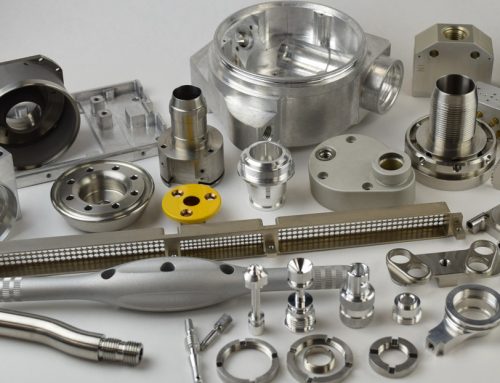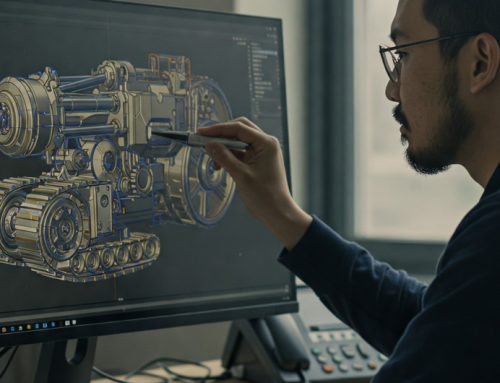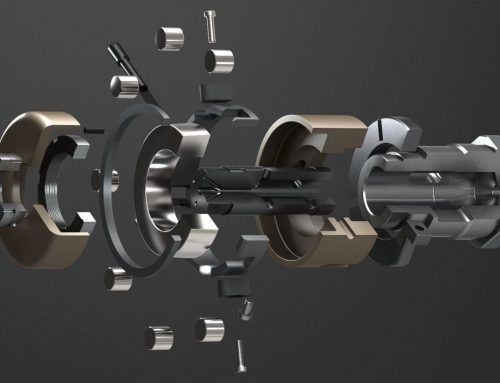
Creativity is not only a desirable quality in today’s fast-paced digital and industrial environment, but it is also a competitive need. Your success is determined by how fast you can go from concept to reality, whether you are a designer pushing the limits of form and function, an engineer validating an inventive mechanism, or a company entrepreneur honing a new product idea. Rapid prototyping services come into play here and totally change the way concepts are realized.
A key component of contemporary product development is rapid prototyping. Businesses can now produce working prototypes more quickly, more affordably, and with greater accuracy thanks to cutting-edge technologies like 3D printing, CNC machining, vacuum casting, and additive manufacturing. Reduced development costs, quicker innovation cycles, and a sharp increase in creative inquiry were the outcomes.
This blog explores the technology that enable fast prototyping, its transformational effects across industries, and how it unlocks creativity.
Rapid Prototyping: What Is It?
The term “rapid prototyping” describes a collection of methods for rapidly creating a working part, component, or scale model utilizing 3D computer-aided design (CAD) data. In contrast to traditional manufacturing, which frequently entails expensive tooling, lengthy turnaround times, and manual procedures, rapid prototyping makes use of highly automated machinery to precisely carve out or manufacture items layer by layer.
Among the most popular techniques for quick prototyping are:
- Additive manufacturing and 3D printing
- CNC Cutting
- Casting by Vacuum
- Prototyping using Sheet Metal
- Injection molding (for quick/small-scale manufacturing)
These tools provide engineers and designers with previously unheard-of flexibility to rapidly iterate and test concepts.
How Quick Prototyping Encourages Innovation?
- The Ability to Test Ideas Without Limitations
Designers had to spend a lot of time and money on traditional production before they could even test a design’s viability. Because errors could be costly, this frequently discouraged experimentation.
That worry is eliminated via rapid prototyping.
Designers are able to:
- Make several iterations of a notion.
- Test different geometries, materials, and shapes.
- Try out some daring or unusual concepts.
In the end, this “freedom to fail” fosters confidence and creativity.
- Quicker Innovation Means Quicker Turnaround
Things that used to take weeks or months can now be completed in a matter of hours or days. Teams may swiftly examine, modify, and refine their designs because to this faster timeline.
Rapid prototyping transforms the conventional linear development cycle into a fluid, dynamic procedure:
- Design
- Prototype
- Assess
- Enhance
- Recreate the prototype
- Complete
Because teams aren’t waiting for lengthy production cycles to test their ideas, this speed instantly translates into more creativity.
- Improved Cooperation and Interaction
Prototypes are effective communication tools. Rapid prototyping creates actual models that are easy for non-technical stakeholders to understand, as opposed to depending on CAD files or 2D drawings, which can be challenging for them to visualize.
This gets better:
- Pitch presentations for investors
- Consumer assessments
- Cooperation among the team
- Engineering feedback
People offer more profound insights and original ideas when they are able to handle and engage with a model.
- Design Verification Prior to Full-Scale Manufacturing
Performance, usefulness, ergonomics, and user experience are all important aspects of creativity. Teams can validate important elements early in the process by using rapid prototyping:
- Is the part a perfect fit?
- Does using the product feel pleasant?
- Are the materials sufficiently robust?
- Does the idea fit the function?
Will consumers adore the appearance and texture?
Early problem detection guarantees that innovation is useful rather than merely theoretical and helps to prevent surprises later.
- Cost Reductions That Encourage Originality
In traditional production, each prototype may need specialized tooling or new molds, which can be expensive. Rapid prototyping allows designers to make changes to their designs and print new versions at little extra expense.
This democratizes invention, making it accessible not only to huge manufacturers but also to:
- New Businesses
- Small companies
- Students
- Self-employed inventors
- Professionals in the creative field
The removal of financial constraints fosters creativity.
The most well-known quick prototyping technology is 3D printing. Using materials including composites, metal powders, resins, and polymers, it constructs items layer by layer.
- Advantages consist of:
- Geometries that are complex
- Very little waste
- Quick production
- Numerous material choices
- Reasonably priced prototyping
3D printing has evolved into a universal tool for creativity, used in everything from medical equipment to aerospace components.
- The use of CNC machines
Layer by layer, 3D printing constructs structures, whereas CNC machining precisely removes material from a solid block.
CNC models work best when:
- High strength is necessary.
- Strict tolerances are necessary.
- It is necessary to do functional testing.
- Metal prototypes are required.
It is ideal for functioning prototypes and final components because of its exceptional surface quality and precision.
- The use of vacuum casting
Vacuum casting uses polyurethane resins and silicone molds to produce high-quality items. When you want to replicate injection-molded parts without having to pay a lot of money, this is perfect.
Among the use cases are:
Production in small quantities
- Prototypes of consumer goods
- Parts that are rubber-like or soft-touch
- At the cost of a prototype, it reproduces outcomes of production quality.
- Fabrication of Sheet Metal
Cutting, bending, punching, or forming metal sheets to make enclosures, brackets, housings, and industrial components is known as sheet metal prototyping.
It is frequently utilized in:
- Electronic devices
- Automobile
- Aircraft
- Medical supplies
Even complex structures can be completed in a few days using rapid sheet metal services.
Sectors Rapid Prototyping Changed
- Automobile
Rapid prototyping speeds up the development of new vehicles, from conceptual models to practical testing components.
- Medical Equipment & Healthcare
Rapid and accurate production is possible for implants, surgical instruments, prostheses, and diagnostic devices.
- Electronics for consumers
Fast prototyping improves ergonomic testing, accessory designs, and device enclosures.
- Aircraft
Engineers can experiment with new forms and materials since lightweight, complex pieces can be produced more quickly.
- Creative Arts & Fashion
Designers make jewellery, shoes, costumes, and art installations using fast prototyping.
Rapid Prototyping’s Potential for the Future of Creativity
AI-driven design automation, multi-material printing, stronger materials, and even faster machinery are all anticipated over the next 10 years. This implies:
Prototypes and finished goods will become identical.
Iterations will happen instantly.
There will be fewer and fewer restrictions on creativity.
Innovation will continue to be fueled by rapid prototyping.
Conclusion
Rapid prototyping technologies have changed the face of contemporary innovation. They enable people and organizations to push boundaries and explore ideas fearlessly by saving time, money, fostering experimentation, and enhancing collaboration. Traditional manufacturing constraints no longer hinder creativity; instead, it can flourish in a setting that allows concepts to be quickly tested, refined, and realized.




